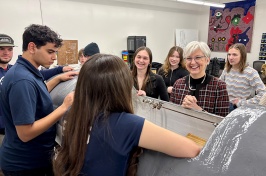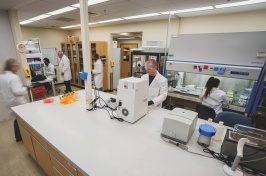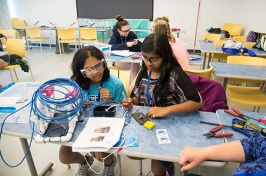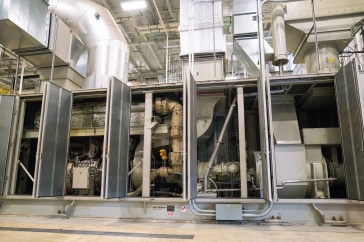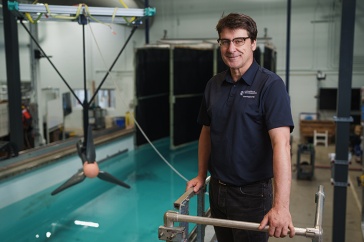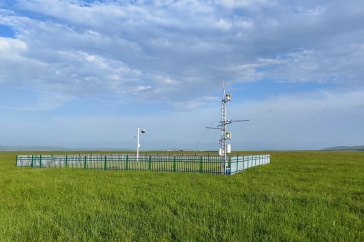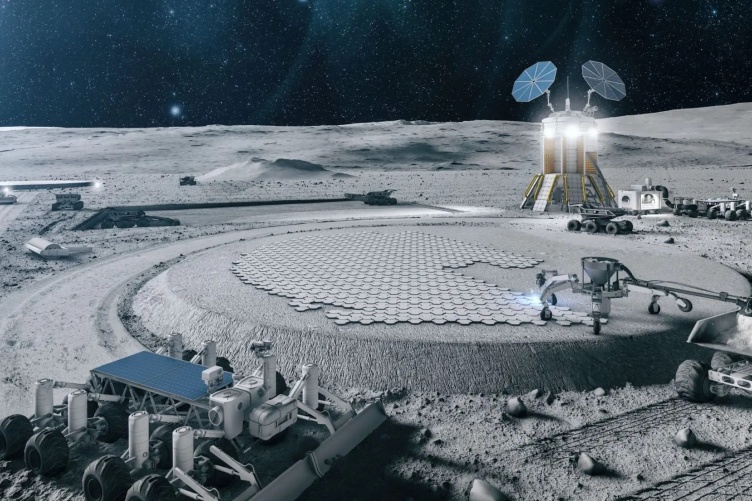
UNH researchers and collaborators will explore creating “in-space factories” to reclaim and retrieve space resources to use in assembling and fabricating space-related hardware. Illustration courtesy of Astroport Space Technologies.
From discarded pieces of rockets to satellite fragments, there are tens of thousands of pieces of space junk floating around in space causing hazardous conditions for future space missions. UNH researchers have been awarded nearly $3 million from the National Science Foundation to explore ways to recycle and reuse that cosmic debris to create a sustainable in-space manufacturing (ISM) industry that looks at ways to reclaim discarded space materials, like metal, as well as incorporate natural elements, like rocks and sand, found on the moon.

“The overarching goal of this project is to guide the development of a sustainable in-space industry that minimizes or reduces the impact of overusing our resources here on Earth,” says Weiwei Mo, associate professor of civil and environmental engineering and principal investigator on the grant. “We are at the infancy of figuring how to create the logistics for in-space manufacturing but ultimately, the goal is to produce a space mission using materials and resources from space and to be able to leave the Earth’s resources for other much-needed purposes.”
The UNH researchers will collaborate with scientists from Purdue and Baylor universities, with support from NASA and Astroport Space Technologies, to explore ISM and the concept to set up “in-space factories” to reclaim and retrieve space resources to use in assembling and fabricating space-related hardware. This study will develop a framework to assess how in-space manufacturing may impact sustainability on Earth and in space.
“The goal is to produce a space mission using materials and resources from space and to be able to leave the Earth’s resources for other much-needed purposes.”
Researchers will explore ways to minimize the environmental impact by managing waste, assuring quality and optimizing resources used in the harsh environment of space, understanding how terrestrial manufacturing technologies may be sustainably adapted to the space environment and identifying the critical enablers and barriers towards a more sustainable space industry.
The focus is on the potential for long-term benefits for Earth and humans around the globe facing challenges like climate change, resource depletion, environmental pollution and population growth. This project will also be a first attempt in conceptualizing space sustainability. Questions such as what “space sustainability” means and how and to what extent in-space manufacturing is likely to “pollute” the space environment will be explored.
The scientists say future knowledge and tools developed around ISM could also have benefits on Earth, citing examples like being able to better distribute manufacturing to rural communities to help reduce supply chain issues. They stress that it will be important for the fundamental principles developed for ISM to incorporate sustainable processes and technologies to ensure the pursuit of progress aligns with the goals of environmental stewardship and long-term viability.
“It may all sound futuristic but the need for sustainability is now and is the most important goal in how in-space manufacturing could help protect both Earth and space environments,” says Mo.
The research will also fulfill a significant national goal to advance sustainable ISM in order to create critical emerging technologies. The first countries to develop this capability will stimulate spin-off technologies across a number of related fields and industries.
As of November 2022, the U.S. Space Surveillance Network reported 25,857 artificial objects in orbit above the Earth. More debris that is too small to be tracked—like paint flecks and solid rocket exhaust particles—exists in the near-Earth space environment. All are large enough to be a hazard for spacecrafts and can threaten astronauts traveling into space, the International Space Station, as well as unmanned robotic missions.
-
Written By:
Robbin Ray ’82 | UNH Marketing | robbin.ray@unh.edu | 603-862-4864






















